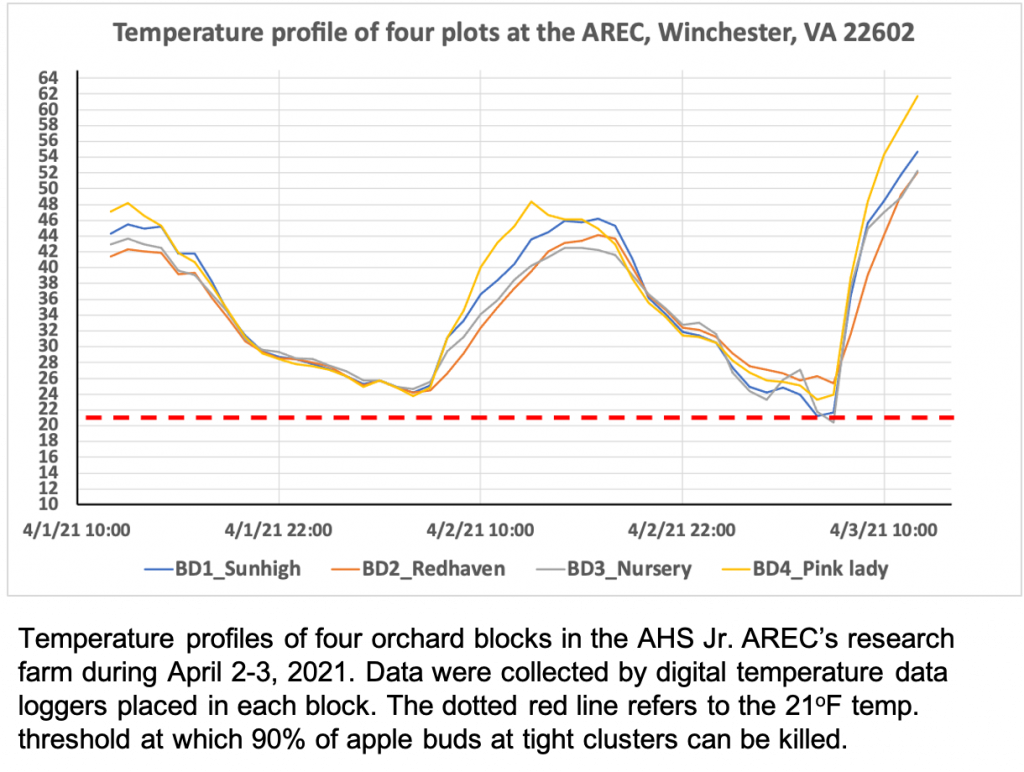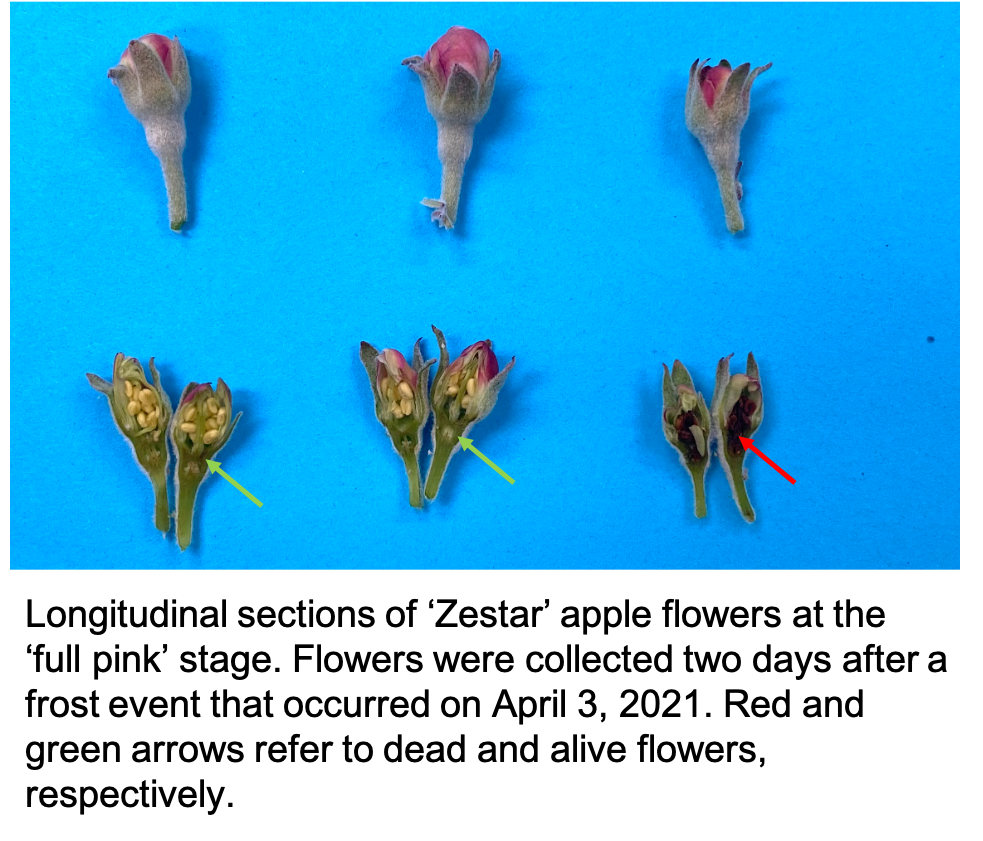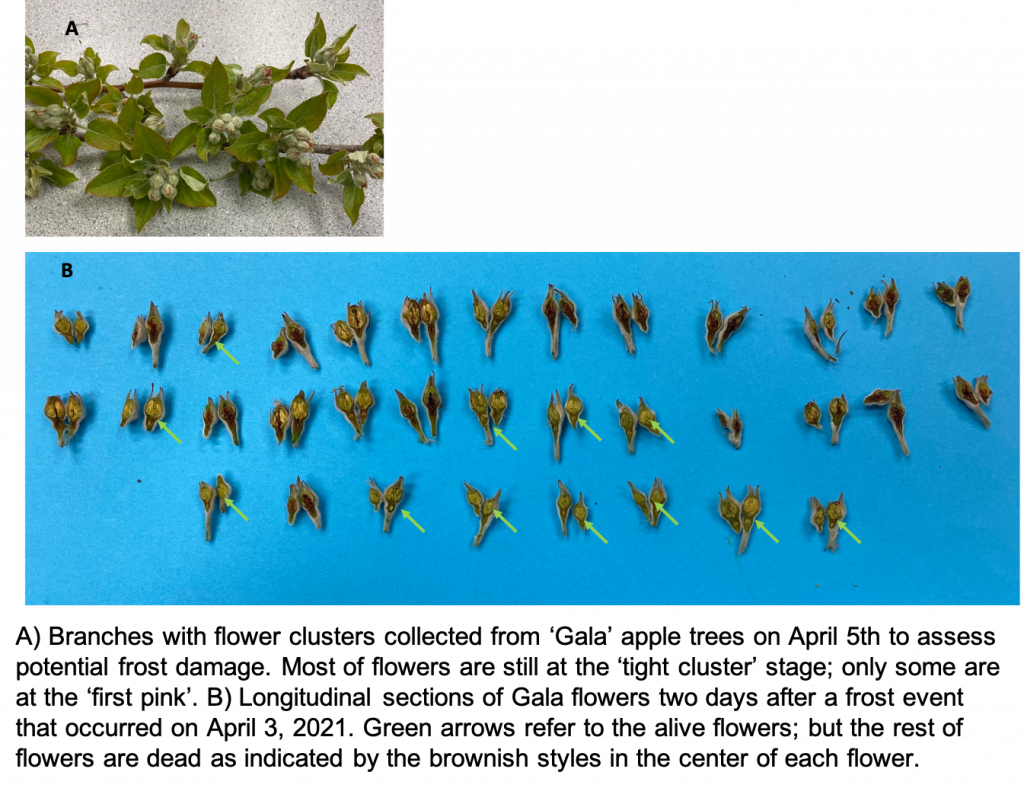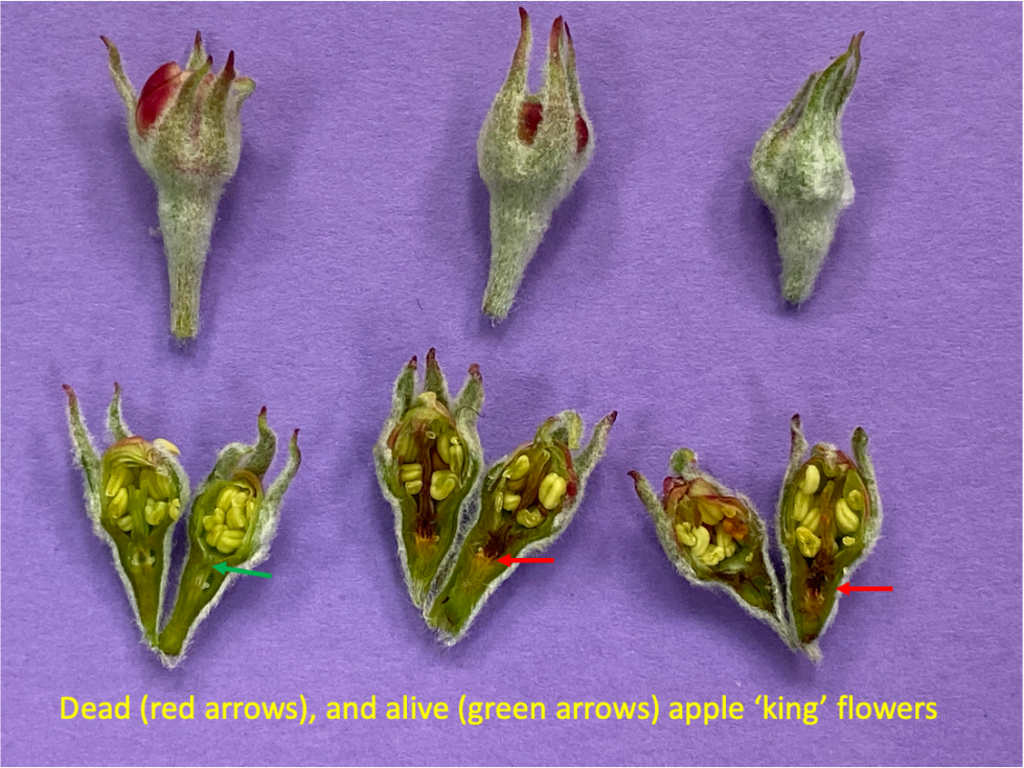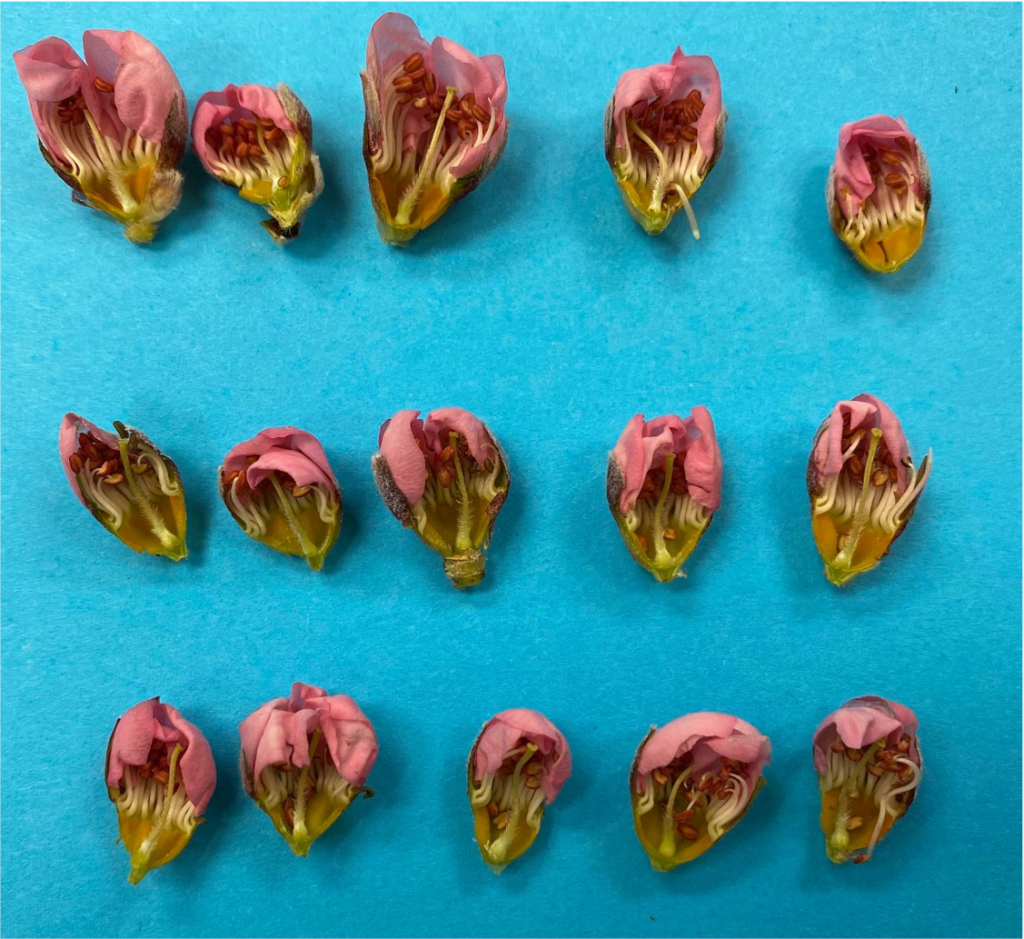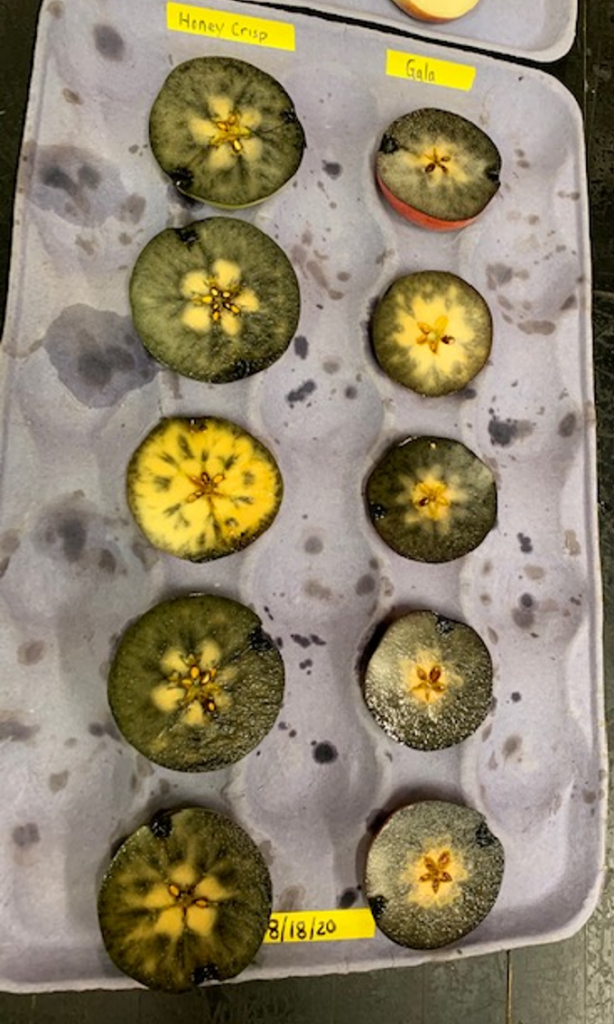Greetings,
Please find below an email I just received from our new plant pathologist, Dr. Srdjan Acimovic, regarding the fire blight situation in different Virginia locations. Dr. Srdjan will communicate his recommendations directly to you through his blog when he officially starts his job with Virginia Tech by the end of May 2021.
I am not sure are the weather stations accurate i.e. functioning properly in the airports or orchards, but there is a fire blight infection predicted for today and tomorrow in Charlottesville, and there were three fire blight infections in Roanoke on 4/8, 4/9 and today 4/10, and the same is in Lynchburg. I hope the growers are on top of looking the EIP model in NEWA daily during bloom and caught this and already applied on 4/9 streptomycin + Regulaid in Roanoke and Lynchburg. It they did not, I would still recommend to apply this mix today on anything in bloom. In Charlottesville they need to apply streptomycin 17% @ 1.5 lb/A + Regulaid 1 pt/100 gal today or tomorrow (24 h after the infection on 4/10) on anything that is in bloom. As I recommend on my talks earlier in Feb & March, growers should look at the EIP in NEWA daily. In Manassas, fire blight infection is predicted for 4/12, in Rustburg there is an infection today 4/10, and there was an infection block from 4/6-8. I hope they protected against that block. In Staunton there is an infection today 4/10, in Washington (G cellars) there was an infection 4/7. In Newport News there is an infection tomorrow 4/11, In Norfolk there is an infection today 4/10 and 4/11. In Richmond infection occurred yesterday 4/9, and it still warrants an application of strep+ Regulaid today when another infection is predicted also. In Staunton infection is predicted today, they can spray up to 24 h after infection today. Same spray mix recommended above will work.
Now, for all the locations that did not apply streptomycin on time in Roanoke and Lynchburg (for infection 4/8) they should immediately apply 12 oz/100 gal of Apogee or equivalent rare of Kudos, at 2-3 days from the infection on 4/8, and they should still apply streptomycin + Regulaid mix above today or tomorrow for infection today. They can mix all three, Apogee, strep, Regulaid. If no Regulaud accessible use LI700, but Regulaid is preferred.



